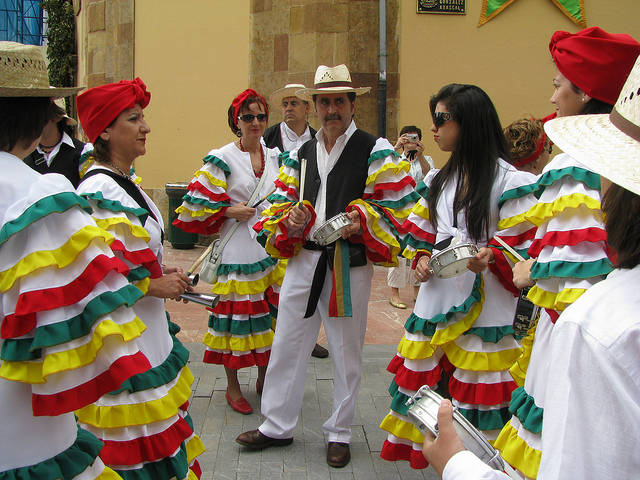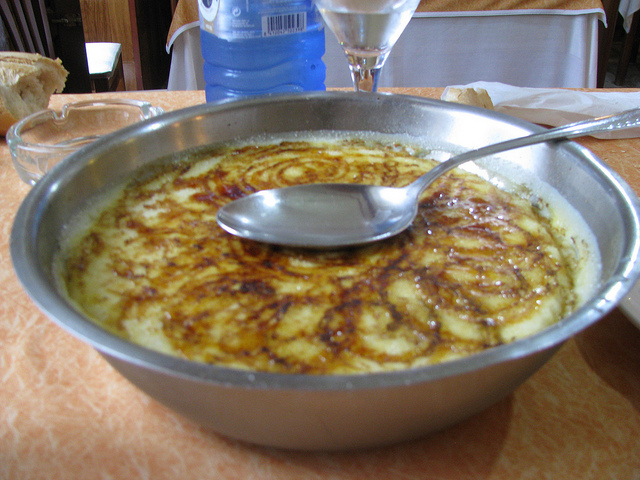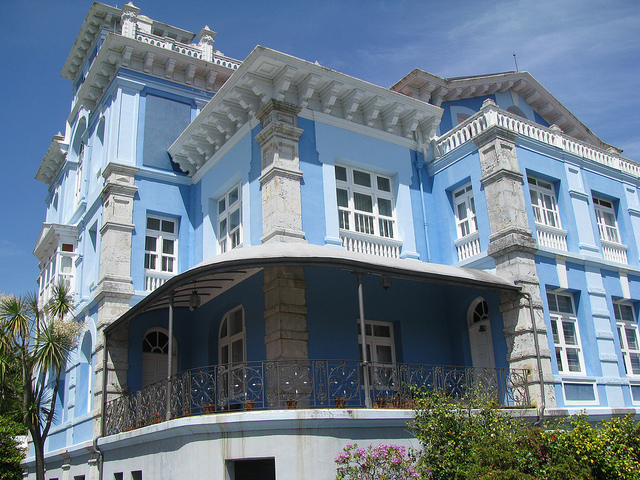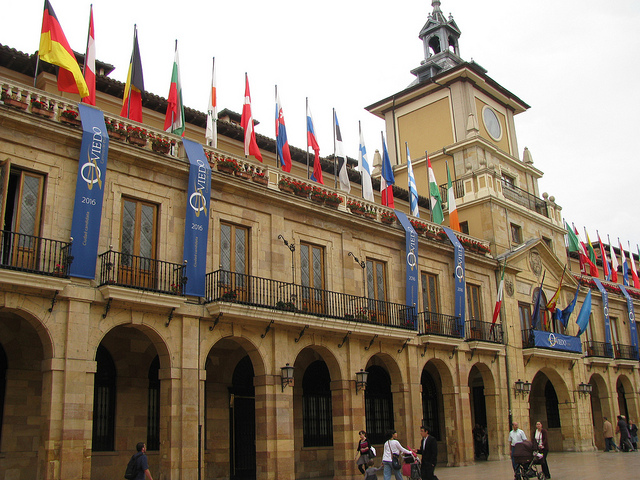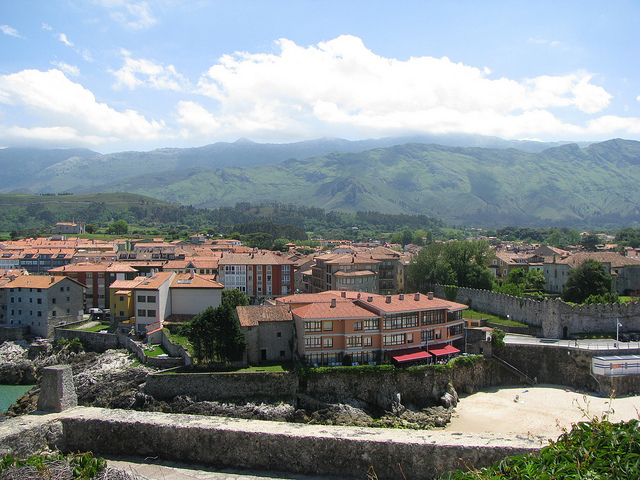After a much needed restful sleep on my arrival day at the Barcelo Oviedo Cervantes Hotel, I woke up early at 7 am and was ready for my first full day in Asturias, a beautiful region in the north of Spain that offers a combination of high mountains and ocean. During the morning I was planning to get to know the capital, Oviedo, in a walking tour with local culture and tourism expert, Liliana Ausín, who had been selected for me by Turismo Asturias.

A big breakfast buffet was waiting for me
But before I embarked on my guided tour, I had a quick breakfast in my hotel which featured a large buffet with different types of cheeses, smoked salmon, cold cuts, freshly baked breads, fresh fruit juices and a large assortment of sweets, croissants, muffins, yoghurts and cereals. Then I headed out for a quick walk through downtown on this gorgeous day.

Morning views of Oviedo
With less than an hour before my scheduled tour, I walked through Oviedo’s downtown, through its famous Campo de San Francisco Park and also came across the Mercado del Fontán, the city’s municipal market. Further west on the Calle del Marqués de Santa Cruz I stopped to take photographs of some beautiful early 20th century townhouses. Adorned with plasterwork and multi-coloured detailing, these urban row houses were built during a time when Oviedo was experiencing a major industrial and economic growth.

Beautiful early 20th century architecture in Oviedo
Now I had to hurry up and make my way back to the hotel in order to meet my guide, Liliana Ausín. Liliana is an expert tour guide with a great knowledge of the entire province of Asturias. She is also intricately involved with the Prince of Asturias awards that are given to distinguished winners from around the world in eight different categories, which include arts, social sciences, literature, sports and others.

Gorgeous church on the Plaza del Ayuntamiento
Liliana and I got into my car and started our driving tour by heading north out of the downtown area towards Mount Naranco. We crossed the busy Avenida del Cantábrico and started to head up into the hills. After a short drive we made our first stop at San Miguel de Lillo, a small Pre-Romanesque church that was consecrated in 848. Asturias is famous for its Pre-Romanesque architecture that mostly includes sacral buildings constructed between 711 and 910, the period of the rise and later disappearance of the Kingdom of Asturias. This simple small country church has been a UNESCO World Heritage Site since 1985.

My expert guide Liliana in front of San Miguel del Lillo
We started walking down the hill and admired the gorgeous elevated view over Oviedo. Liliana explained that the central mountainous area of this province is called the Spine of Asturias. The hardest stage of the Spanish cycling tour, the Vuelta Ciclista de España, is located here. Liliana also added that the road up the Naranco Mountain is a popular walking route for retirees, which has earned it the humorous nickname “the Cholesterol Route”. From my brief experience on Naranco Mountain, I certainly agreed that this would be a beautiful area for walking and hiking.

A great view over Oviedo
About 100 metres away from San Miguel de Lillo is the Church of Santa María del Naranco..
Formerly a royal palace constructed by King Ramiro I. of Asturias, it was also completed in 848 AD. During the 12th century it was converted from a civil building into a church dedicated to the Virgin Mary and is one of the most beautiful and best preserved precursors of Romanesque architecture which emerged in other areas about two centuries later.

Santa Maria del Naranco, a UNESCO World Heritage Site
Santa María del Naranco is one of Oviedo’s most famous sites and this morning there were already several buses full of Spanish tourists here to admire this outstanding example of Pre-Romaneseque art. As is the case with its smaller neighbour, Santa María del Naranco was also designated as a UNESCO World Heritage Site. The triple-arch window of this historic structure has become so iconic that it was chosen as the tourism logo of Asturias.

Modern architecture by Santiago Calatrava
